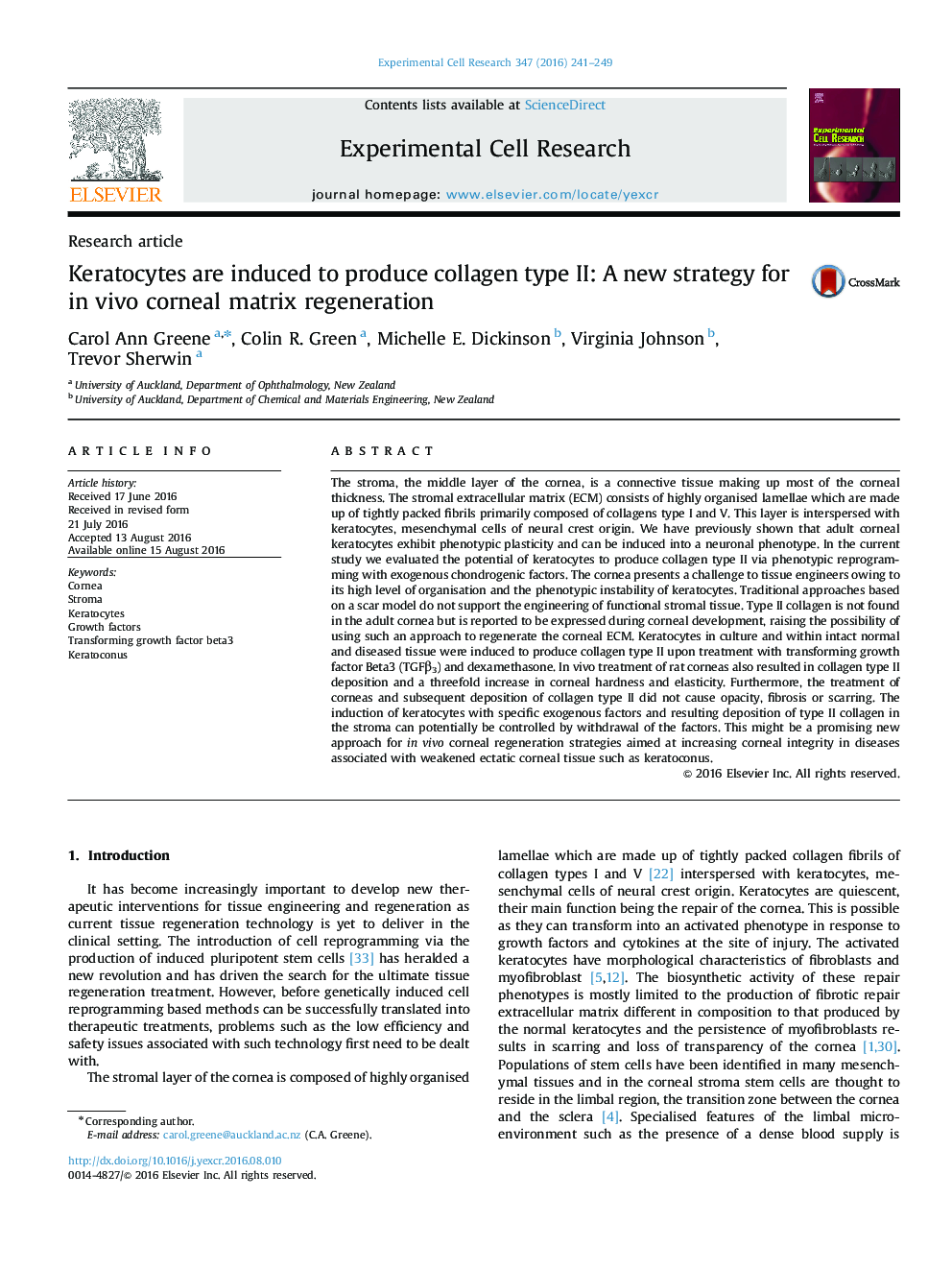| Article ID | Journal | Published Year | Pages | File Type |
|---|---|---|---|---|
| 2129903 | Experimental Cell Research | 2016 | 9 Pages |
•Keratocytes are induced to produce collagen type II.•Collagen type II is induced by TGFβ3 and dexamethasone.•Collagen type II deposition did not cause opacity and it increased hardness.•Collagen type II could be induced to strengthen a weakened cornea.
The stroma, the middle layer of the cornea, is a connective tissue making up most of the corneal thickness. The stromal extracellular matrix (ECM) consists of highly organised lamellae which are made up of tightly packed fibrils primarily composed of collagens type I and V. This layer is interspersed with keratocytes, mesenchymal cells of neural crest origin. We have previously shown that adult corneal keratocytes exhibit phenotypic plasticity and can be induced into a neuronal phenotype. In the current study we evaluated the potential of keratocytes to produce collagen type II via phenotypic reprogramming with exogenous chondrogenic factors. The cornea presents a challenge to tissue engineers owing to its high level of organisation and the phenotypic instability of keratocytes. Traditional approaches based on a scar model do not support the engineering of functional stromal tissue. Type II collagen is not found in the adult cornea but is reported to be expressed during corneal development, raising the possibility of using such an approach to regenerate the corneal ECM. Keratocytes in culture and within intact normal and diseased tissue were induced to produce collagen type II upon treatment with transforming growth factor Beta3 (TGFβ3) and dexamethasone. In vivo treatment of rat corneas also resulted in collagen type II deposition and a threefold increase in corneal hardness and elasticity. Furthermore, the treatment of corneas and subsequent deposition of collagen type II did not cause opacity, fibrosis or scarring. The induction of keratocytes with specific exogenous factors and resulting deposition of type II collagen in the stroma can potentially be controlled by withdrawal of the factors. This might be a promising new approach for in vivo corneal regeneration strategies aimed at increasing corneal integrity in diseases associated with weakened ectatic corneal tissue such as keratoconus.
